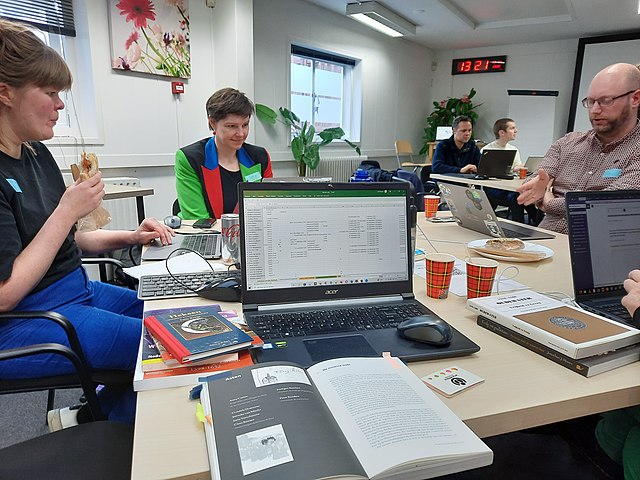Introduction
In today’s increasingly digital world, technology has the potential to transform education, making learning more accessible and equitable for all students. However, for students in under-resourced schools or communities, the digital divide, often marked by unequal access to technology, poses a significant challenge. Outreach programs focused on bringing technology to schools are vital in helping bridge this gap, ensuring that all students, regardless of their background or socio-economic status, have equal opportunities to succeed. These initiatives not only address immediate technological needs but also pave the way for long-term academic and personal growth.
Meeting Immediate Technological Needs in Schools
Many schools, especially those in low-income areas, lack the resources to provide students with the technology they need for success. Outreach programs focused on technology can provide immediate solutions by offering students access to devices such as laptops, tablets, and internet connectivity. In the era of remote learning, online resources, and digital classrooms, access to reliable technology is no longer a luxury—it’s a necessity.
For instance, outreach initiatives that provide schools with refurbished computers or mobile hotspots can have an immediate and transformative impact. By ensuring that all students have access to the technology required for their studies, these programs help eliminate barriers that might otherwise limit a student’s ability to participate in class, complete assignments, or access educational resources. Technology outreach, therefore, directly addresses the inequality faced by many schools in underprivileged communities.
Promoting Digital Literacy and Skills Development
Beyond simply providing devices, technology outreach programs are essential in promoting digital literacy and skills development. In today’s job market, digital skills are critical for success. Outreach programs that offer students training in basic computer skills, coding, and other technical competencies help level the playing field for students from diverse backgrounds, particularly those who might not have exposure to technology at home.
These programs can be integrated into the curriculum, offering students the chance to learn how to use technology responsibly, access educational content, and develop skills that will be valuable for their future careers. For example, students can learn how to create digital portfolios, use online research tools, and navigate educational platforms that enhance their learning experience. By building digital literacy, outreach programs help equip students with the tools they need to succeed academically and professionally in an increasingly technology-driven world.
Fostering Equity and Inclusivity in Education
Technology outreach in schools plays a key role in fostering equity and inclusivity in education. Students from marginalized communities—whether due to economic, racial, or geographic factors—often face significant disparities in access to technology. Outreach programs aimed at these communities ensure that all students have access to the same educational opportunities, regardless of their socio-economic background.
For example, providing schools with technology can help close the achievement gap between students in affluent areas and those in underfunded districts. These programs may also offer additional support for students with disabilities, such as providing assistive technology tools that enable students with visual or hearing impairments to access lessons and materials in a way that works best for them. In this way, outreach programs ensure that every student has the chance to thrive and participate fully in their education.
Enhancing Teacher Development and Resource Access
Outreach programs focused on technology don’t just benefit students—they also support educators by providing professional development opportunities and access to a wider range of teaching resources. Teachers in underfunded schools often lack access to the latest educational tools and technology, which can limit their ability to engage students and deliver effective lessons. By incorporating technology outreach for teachers, schools can help educators develop the digital skills necessary to create more engaging, interactive lessons.
Additionally, technology outreach programs often provide teachers with access to educational software, online platforms, and digital content that enhance their teaching capabilities. For example, learning management systems (LMS), digital grading tools, and interactive classroom software can transform how teachers manage their classrooms and communicate with students. As teachers become more tech-savvy, they can better support students in the digital world, making learning more effective and inclusive.
Preparing Students for the Future Workforce
In a rapidly evolving digital landscape, preparing students for future careers in technology, science, and business is essential. Outreach programs that bring technology into schools play a critical role in this preparation by offering students hands-on experience with the tools and skills they’ll need in the workforce. Programs such as coding clubs, robotics teams, and digital design workshops allow students to explore emerging fields in a fun, engaging way while building practical, transferable skills.
Furthermore, technology outreach helps students explore careers in STEM (Science, Technology, Engineering, and Mathematics) fields, which are often underrepresented by women and minority groups. By exposing students from diverse backgrounds to these areas at an early age, outreach programs can inspire the next generation of engineers, developers, data scientists, and entrepreneurs, helping to diversify the tech industry and ensure that everyone has the opportunity to pursue their interests and talents.
Bridging the Gap Between School and Community
Technology outreach programs also help bridge the gap between schools and the wider community. In many cases, schools are hubs for their neighborhoods, and providing students with access to technology opens up opportunities for the entire community. For instance, students who learn coding in school may use their skills to create apps or websites that benefit local businesses, nonprofits, or community organizations.
Outreach programs can also offer workshops for parents, helping them improve their own digital literacy so they can better support their children’s education. Community members can engage with schools through virtual meetings, online tutoring, and other technology-driven initiatives, creating a more interconnected and collaborative environment. By bringing technology to schools, outreach programs foster a culture of learning and mutual support that extends far beyond the classroom.
Conclusion
Outreach programs focused on technology play a vital role in addressing the educational disparities faced by under-resourced schools and communities. By providing students and educators with access to technology, promoting digital literacy, and fostering equity and inclusivity, these programs empower students to succeed academically and professionally. More than just providing tools, technology outreach builds the foundation for a future where all students have equal opportunities to thrive, regardless of their background or circumstances.
As technology continues to reshape our world, the importance of outreach programs in schools will only grow. These initiatives are essential for preparing the next generation for the digital age, empowering them to become the innovators, leaders, and change-makers of tomorrow. By investing in technology outreach, we invest in the future of our communities, ensuring that all students, no matter their background, have the resources and opportunities they need to succeed.








